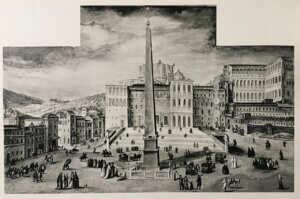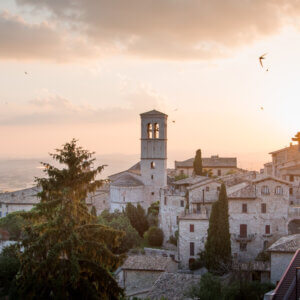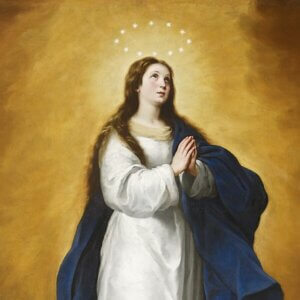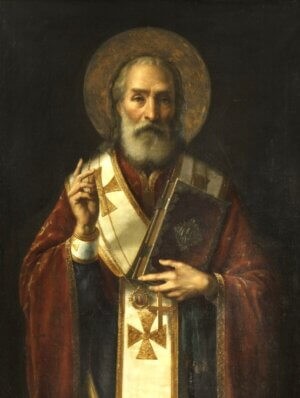At the heart of St. Peter’s Square in Rome, Italy, embraced by iconic colonnades and beautiful Italian architecture, there stands an obelisk from…Egypt?
Yes, the Vatican Obelisk, a quintessential landmark at the Vatican, has a surprising history. Once used in pagan Egypt and then as a symbol of Christian persecution, this obelisk now stands as a testament to the eternal nature of the Catholic Church.
This obelisk was originally erected by an unknown pharaoh in Heliopolis, Egypt, in 37 A.D., at the height of the Roman Empire. Emperor Caligula transported it to Rome to adorn a circus—a chariot-racing arena—he was building. Under Nero, the obelisk stood as a representation of the emperor’s power, a power used at the time to persecute the early Church. This site bore witness to the martyrdom of many Christians, including, according to tradition, St. Peter himself.
By God’s loving providence, the Church prevailed against persecution and eventually Rome became the center of the Church. Yet this obelisk still stood, reminding those who saw it of the long and difficult history of the Faith.
In 1586, in a feat of engineering led by the architect Domenico Fontana under the direction of Pope Sixtus V, the obelisk was moved to its current location. This relocation was more than a mere architectural endeavor; it symbolized the reclamation and Christianization of a monument that had stood witness to the blood of early Christian martyrs.
Beyond its fascinating history, the obelisk itself bears much significance. Unique among Rome’s obelisks, it has never been capped with a pyramidion (a pyramid-shaped stone), a feature typical of ancient Egyptian obelisks. It’s now topped with a bronze emblem of a cross containing a fragment of the True Cross.
This powerful Christian symbol transforms the obelisk into a monumental sundial, its shadow moving across St. Peter’s Square, marking time.
The obelisk’s presence in front of St. Peter’s Basilica is highly symbolic, connecting the Church’s past with her present and future. It serves as a visual metaphor for the Church’s foundation upon the Apostles and martyrs, her unwavering faith standing tall amidst the changing shadows of time.
On its base, the following inscriptions in Latin honor the obelisk’s relocation and its Christian significance:
- On the east side: Christus vincit, Christus regnat, Christus imperat (Christ conquers, Christ reigns, Christ commands).
- On the west side: Ecce Crux Domini, fugite partes adversae, vicit Leo de tribu Juda, Radix David (Behold the Cross of the Lord, flee hostile powers, the Lion of the Tribe of Judah, the Root of David has conquered).
- The north and south sides bear dedications to Pope Sixtus V.
Even if you are unable to get to Rome to see the Vatican Obelisk yourself, you can still participate in the rich traditions of the Vatican right at home! Our favorite fun way to transport ourselves to the Eternal City is by cooking up delicious traditional recipes from The Vatican Cookbook, authored by former Swiss Guard and master chef David Geisser. Along with classic recipes that have been served at the Vatican table for centuries, this cookbook dives deep behind the scenes to secret and special places of Vatican City. Order your copy today from The Catholic Company!












